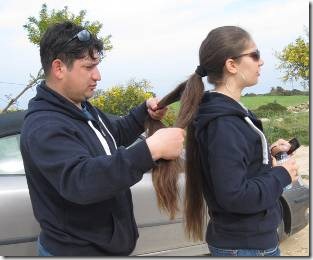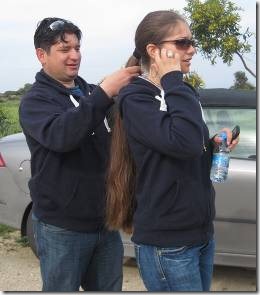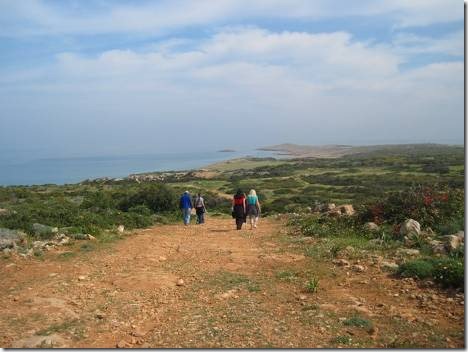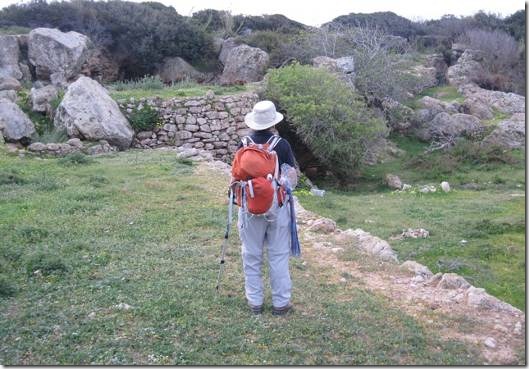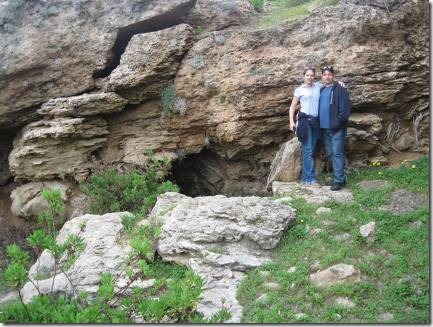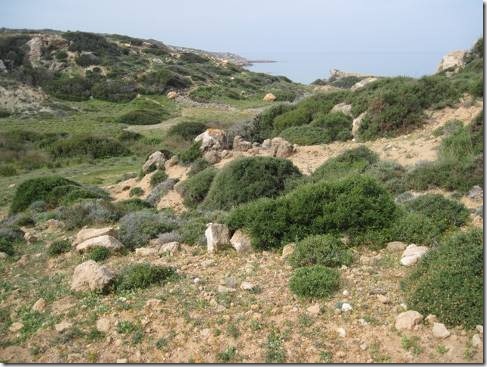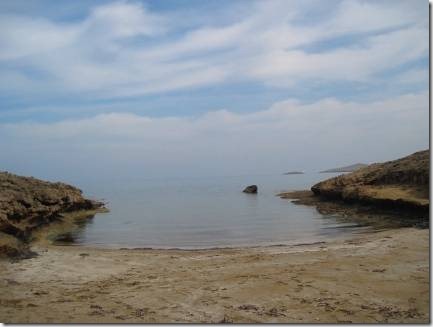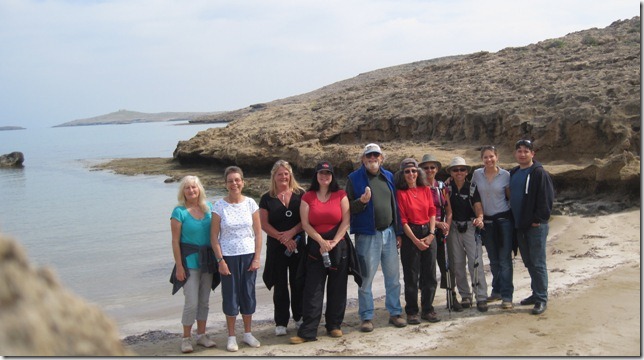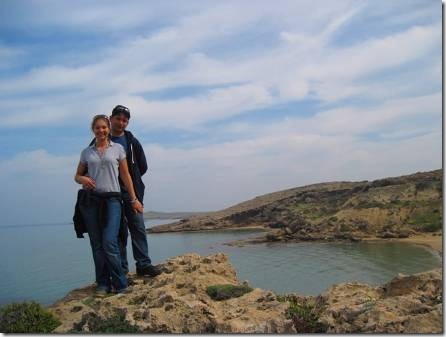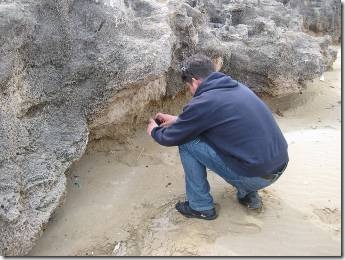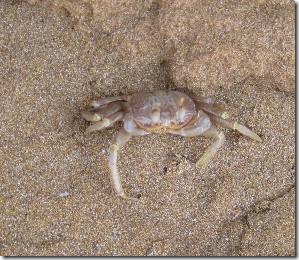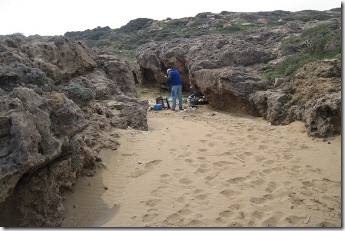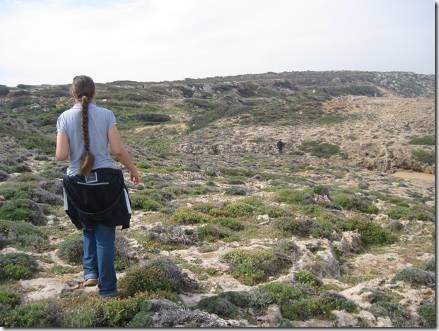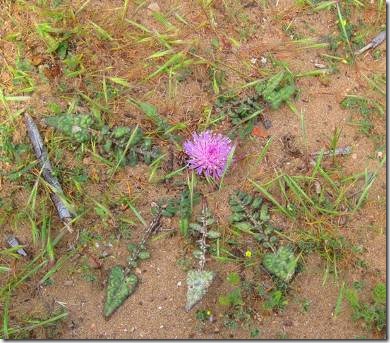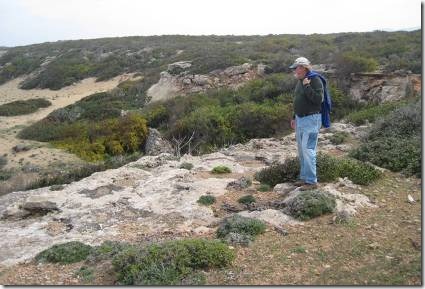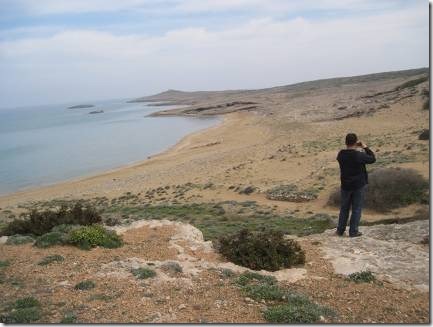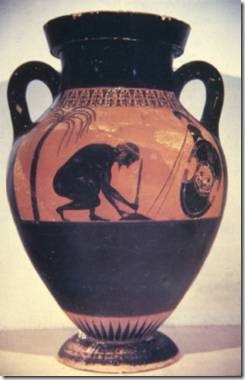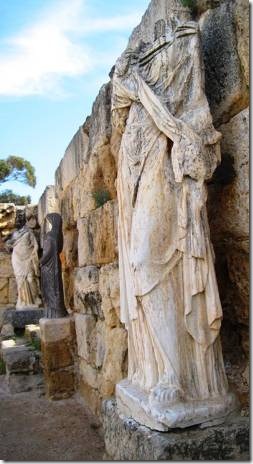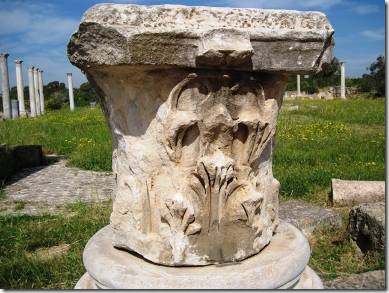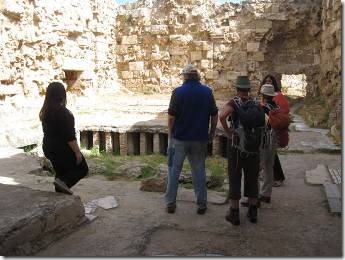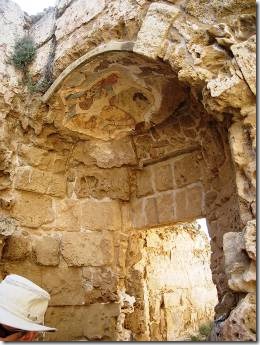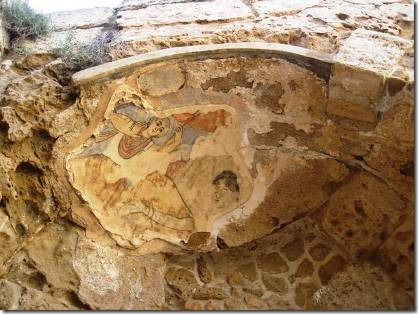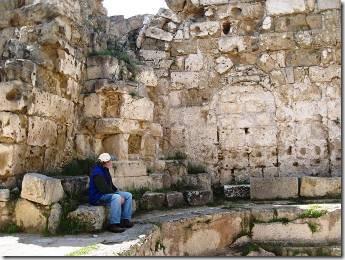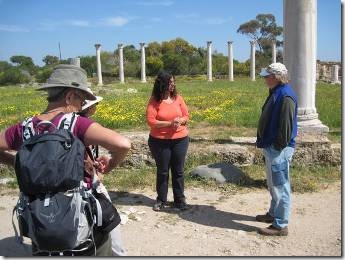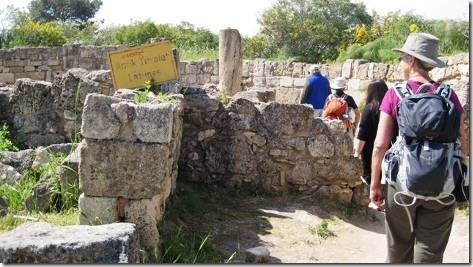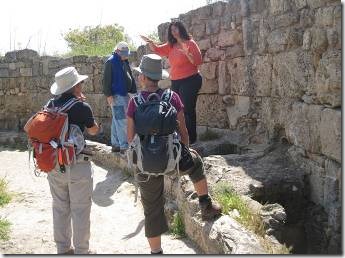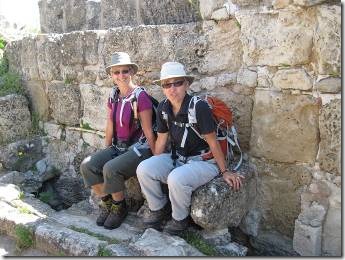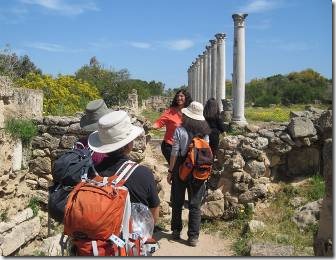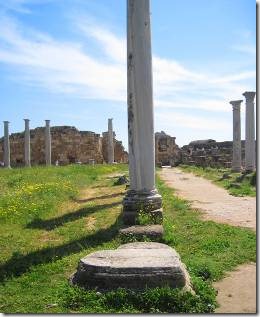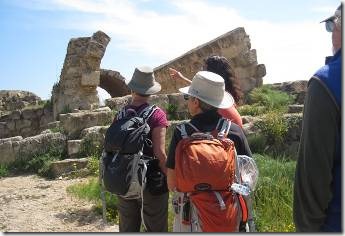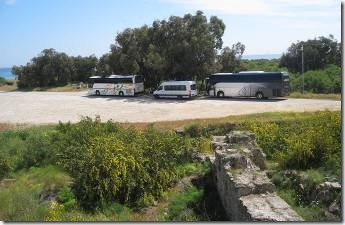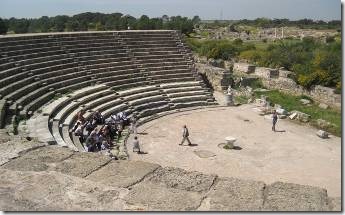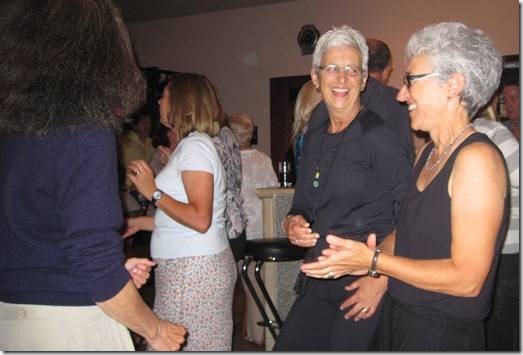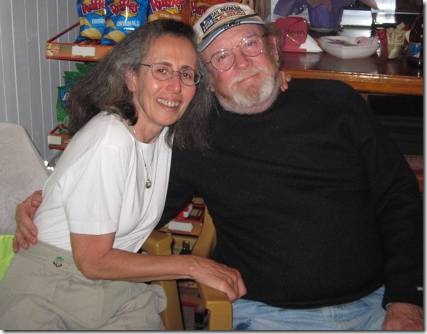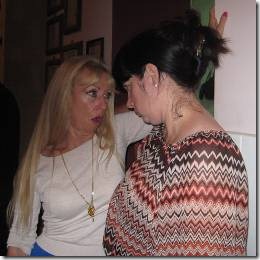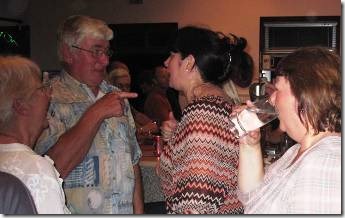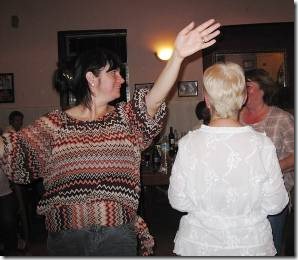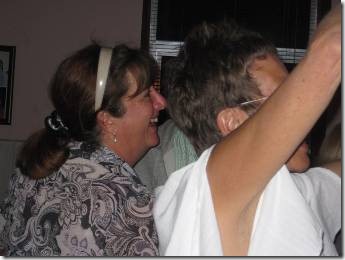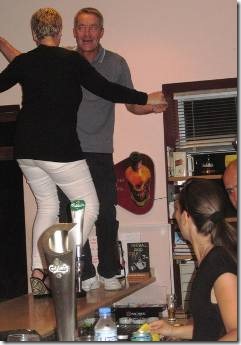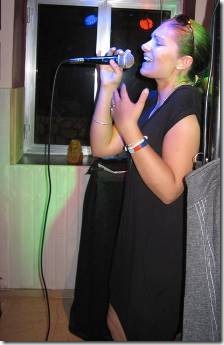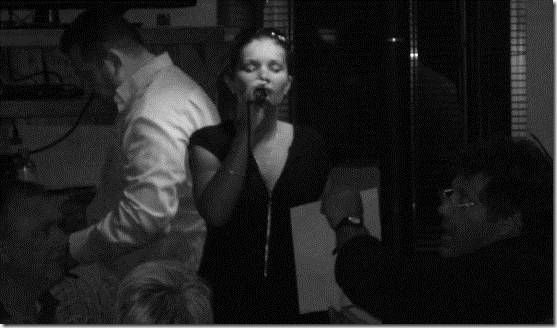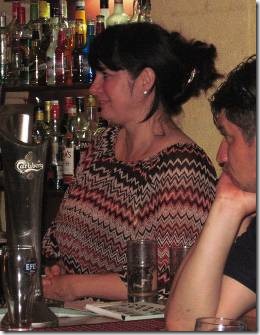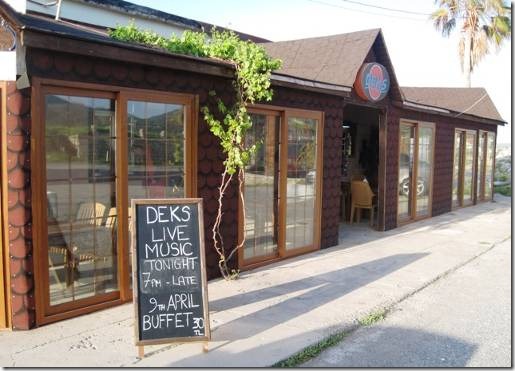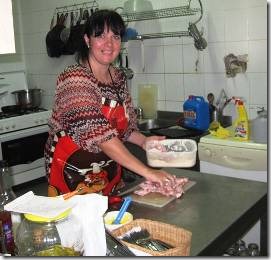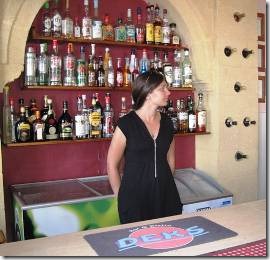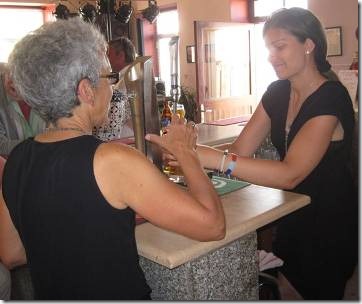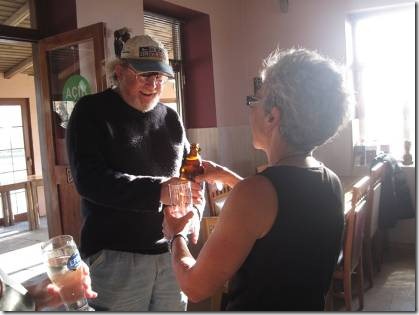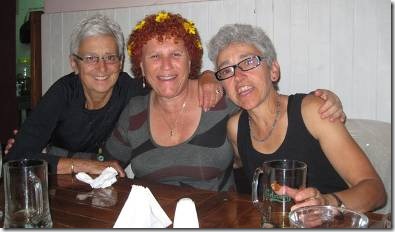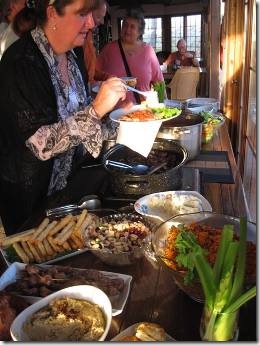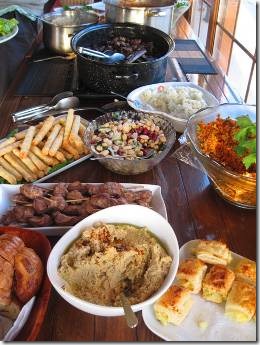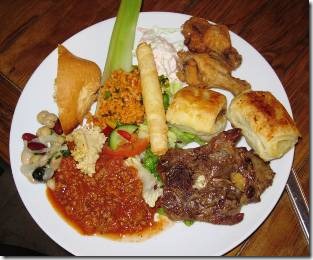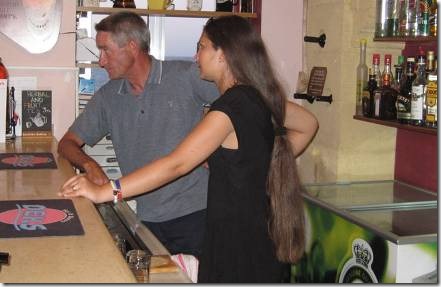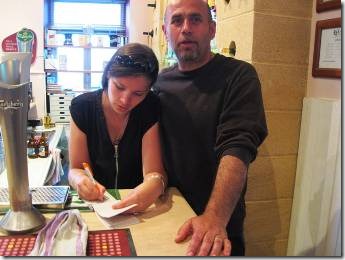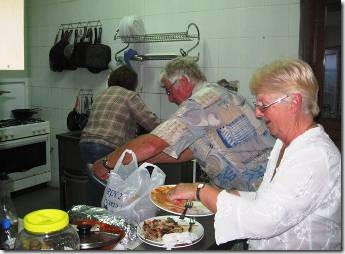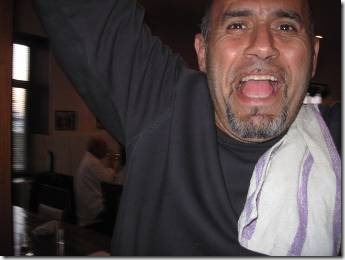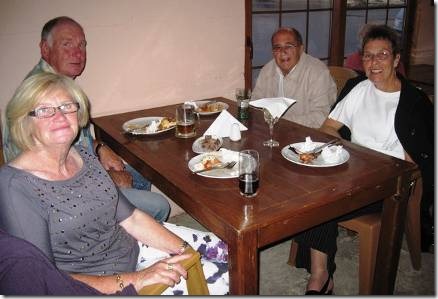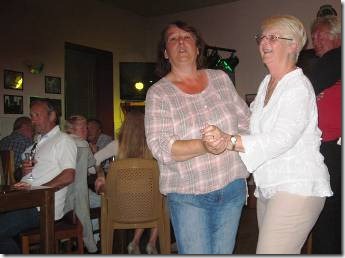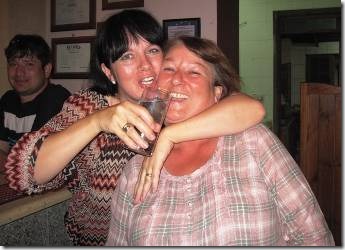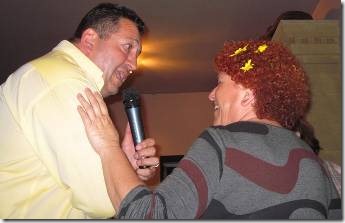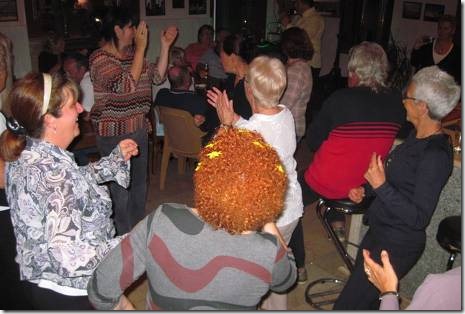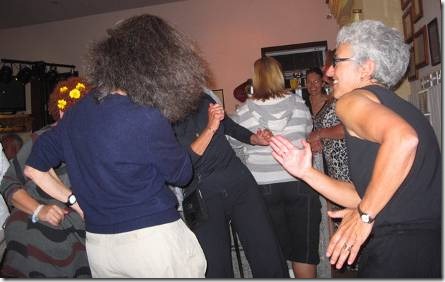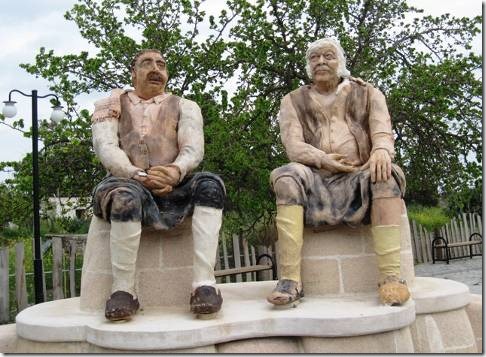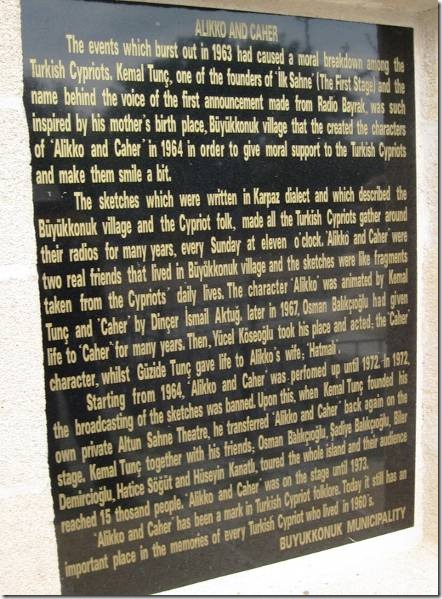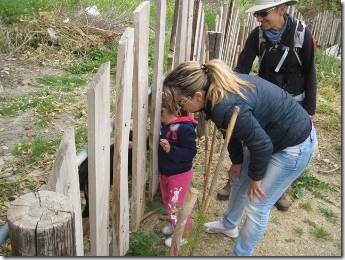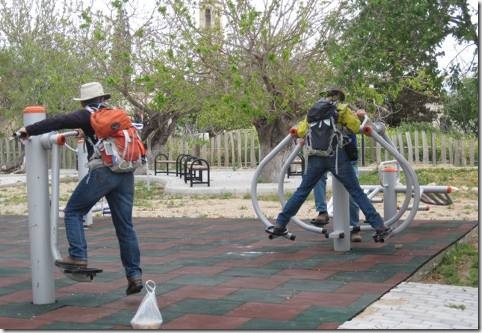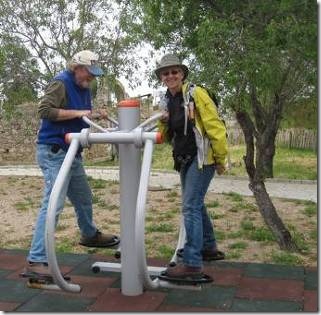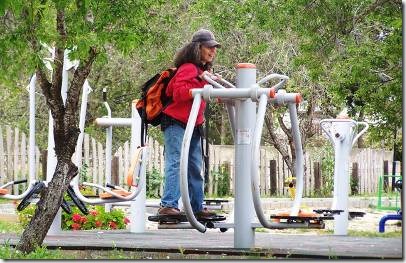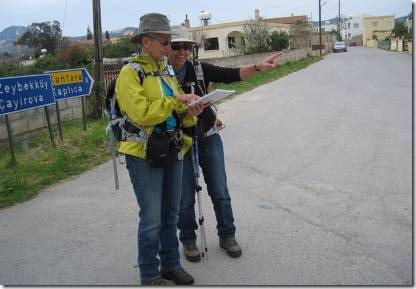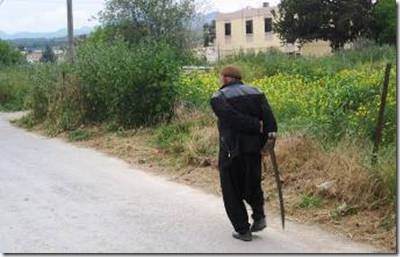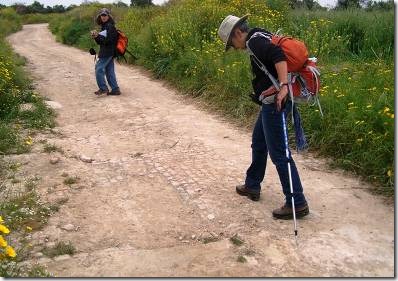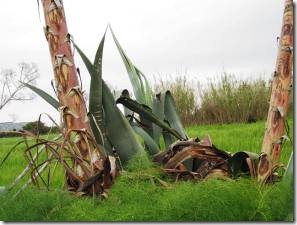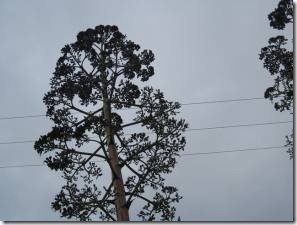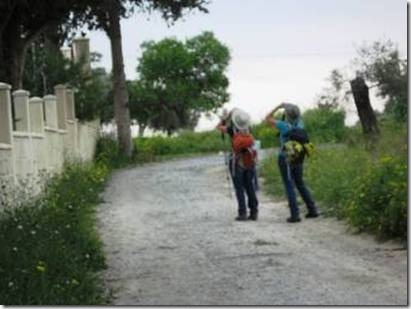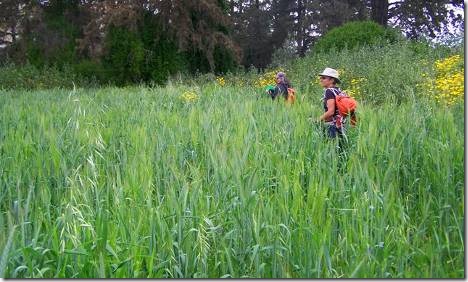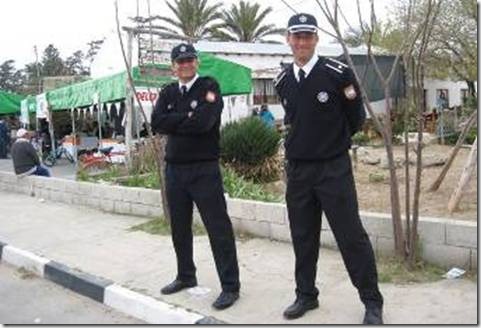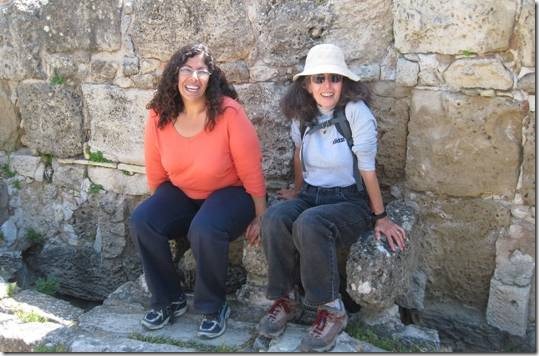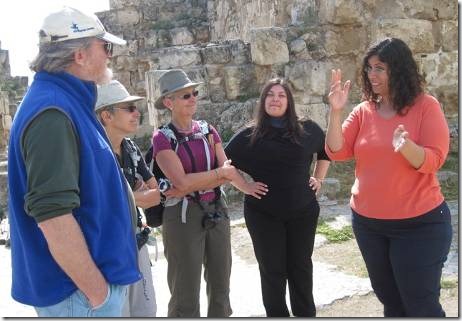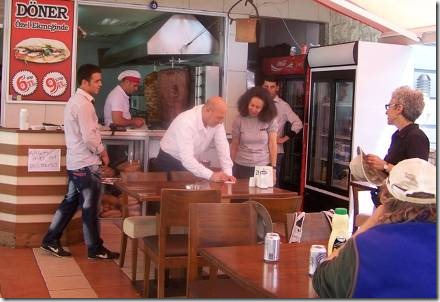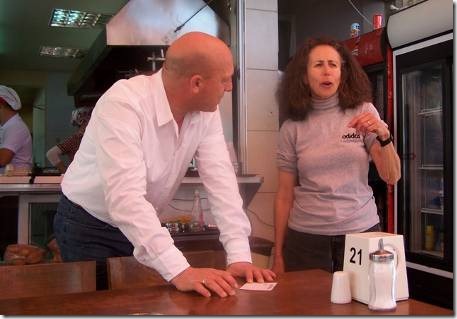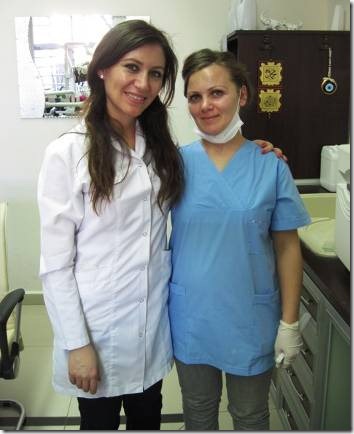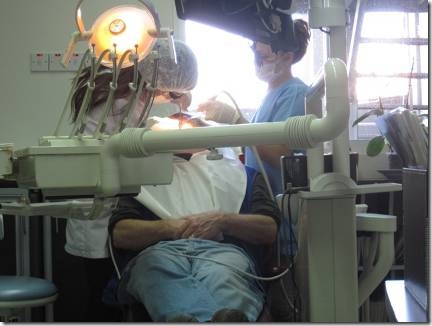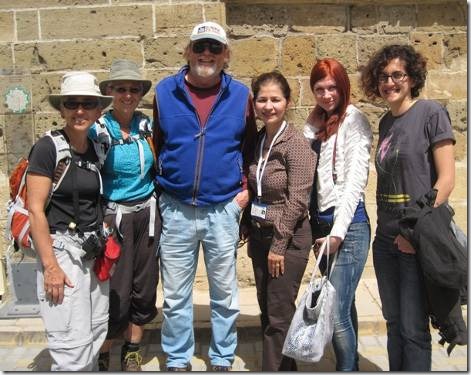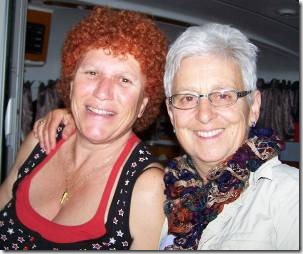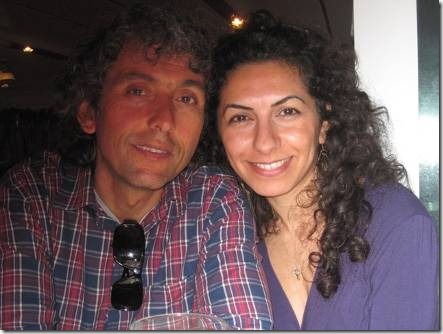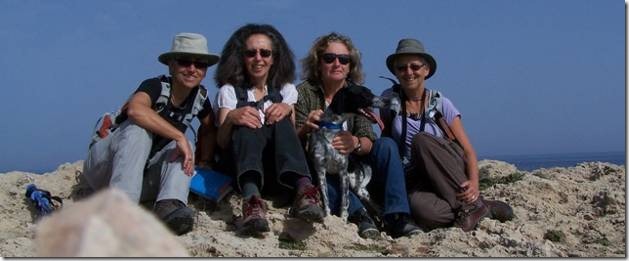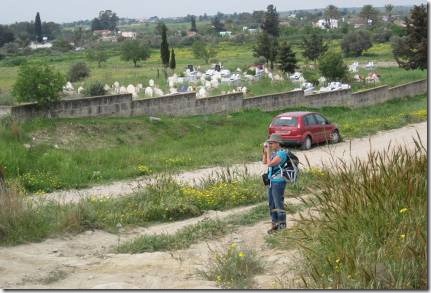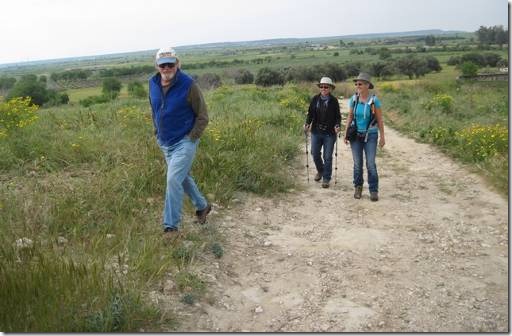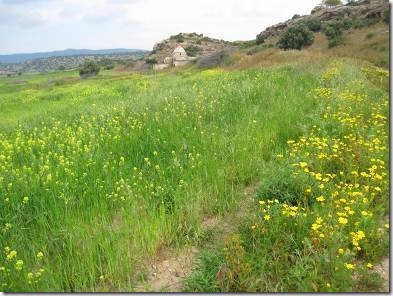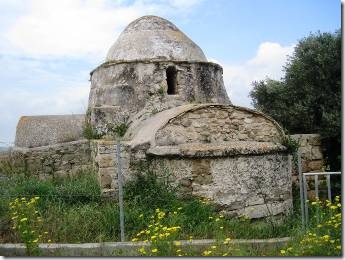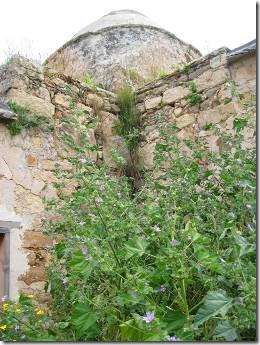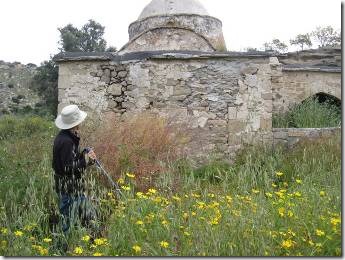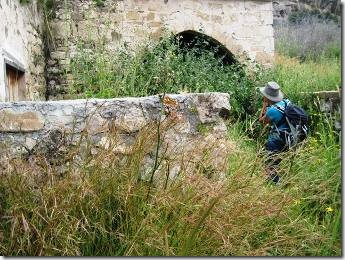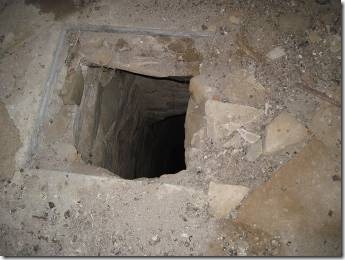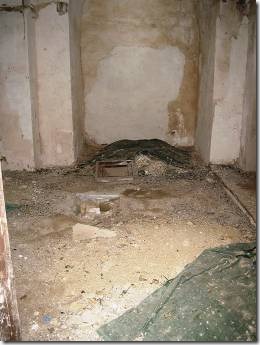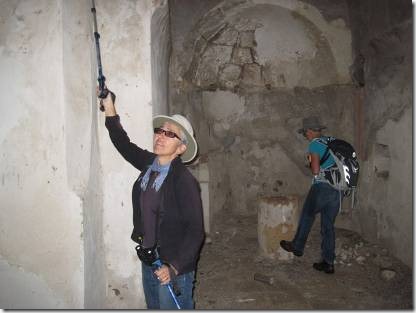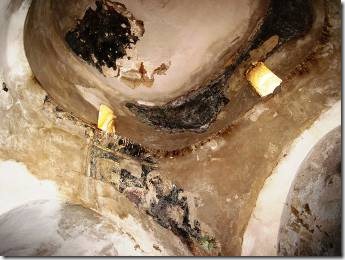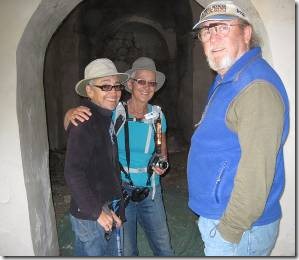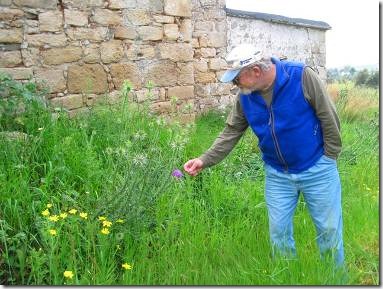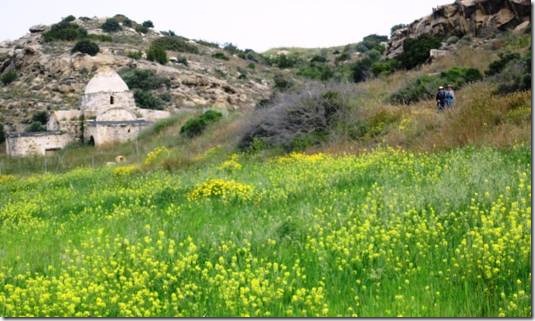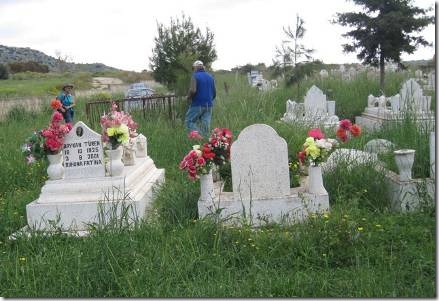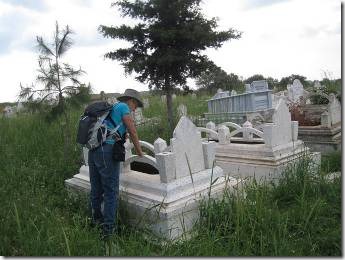Everything is starting to jumble in my head about where we have been when. Thank goodness for photos to remind me. It seems ages ago that we were in Büyükkonuk but it really was only 9 days ago. Since then we’ve had lots of other adventures. One day I’ll catch up. Wednesday we’re going to Kyrenia and parts west. We’ll stay Wednesday night with Heidi and Kalle and then go on to see what we will see returning on Friday. Since last Sunday we’ve been to Nicosia,Deks Walk # 13, a walk in Kaleburnu, and a farewell barbecue dinner at Deks last night. This morning was Turkish lessons. Lots to write up when there’s time.
But in this email we’re returning to Büyükkonuk.
Ru
Yippee Sox finally won a game!
http://www.ecotourismcyprus.org/index.php
“Büyükkonuk is a friendly Cypriot village where local crafts are still practiced and can be seen and purchased at the Delcraft Centre there. The countryside around is lovely with views of Kantara Castle in the distance. To the E the early/middle Byzantine church of Panayia tu Kira is worth a visit.”
Walks in North Cyprus
April 1st Büyükkonuk held its first Outdoor Festival. The scheduled activities included a nature walk, hot air balloon, Duathlon, a rock climbing wall, a bike ride, photo safari and camping. We did our own nature walks and visited the ”festive stalls” but left the rock climbing wall and hot air balloon to the more adventurous.
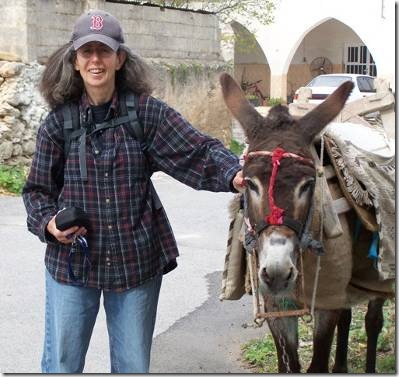
First things first…pat a donkey.
As you can see from this photo, my B hat hardly fits my head anymore with all of my hair!
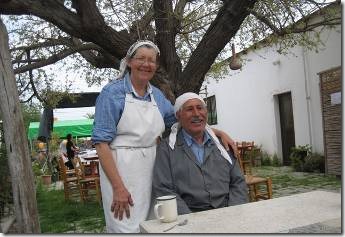
Lois and Ismail Cemal the force behind the Delcraft Centre and much of the eco tourism in Büyükkonuk.
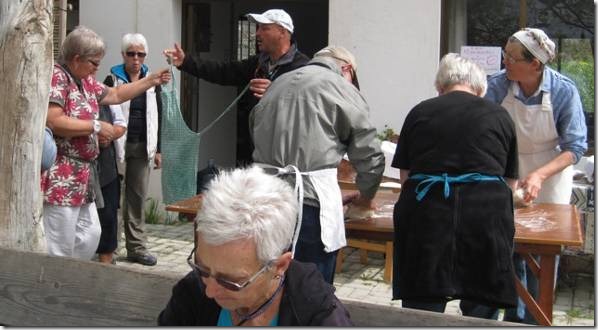
Who will help make the bread asked the little red hen?
In this case it’s Lois leading a “Cypriot bread” making class.
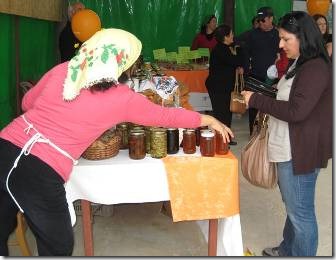
Goodies for sale.
Linda and Charmaine bought something called Turunc Reçeli which seems to translate as Seville Orange Jam. Portakal is an “orange” orange.
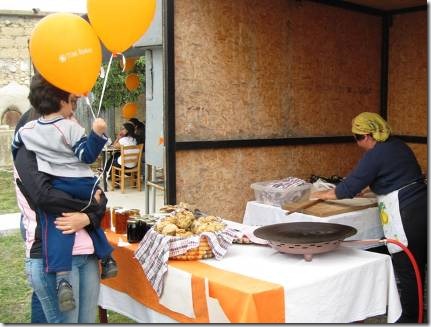
Kids and balloons and food can be found at a fair anywhere in the world.
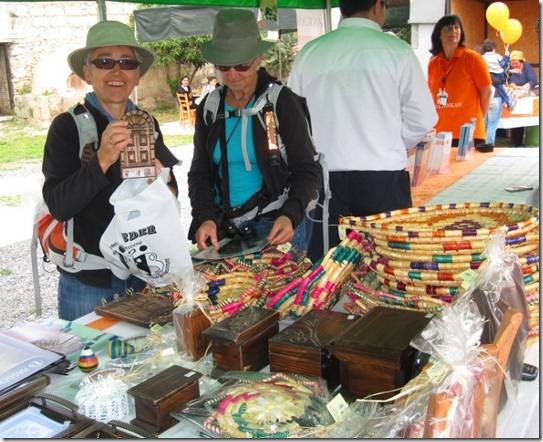
A souvenir key holder shaped like a church door will go back to Canada.
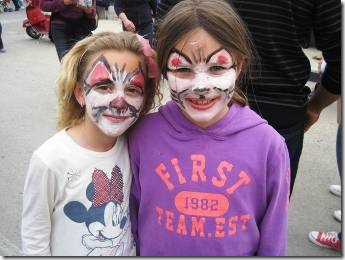
Face painting is a familiar activity too.
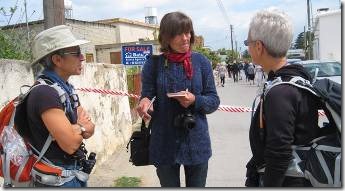
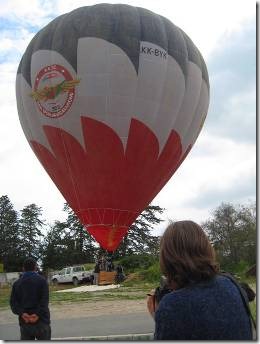
Anne Canalp interviewing Linda and Charmaine for Cyprus Today and then photographing the hot air balloon.
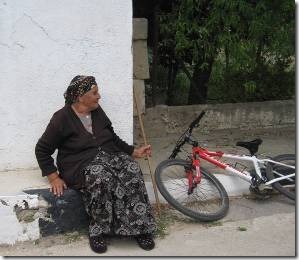
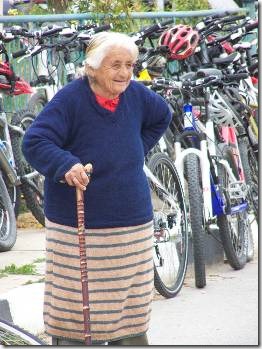
Everyone wanted photos of the “senior ladies” and they graciously agreed.
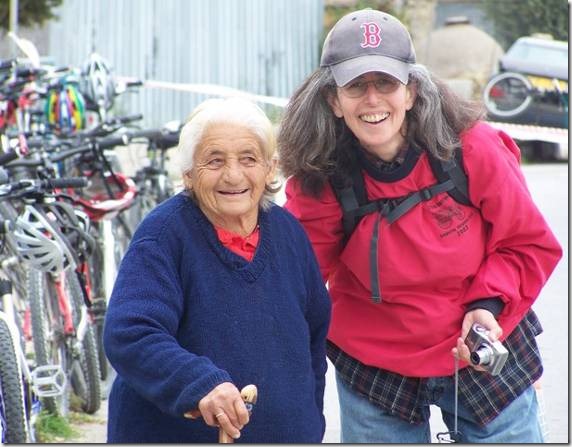
Isn’t she cute! (photo by Charmaine)
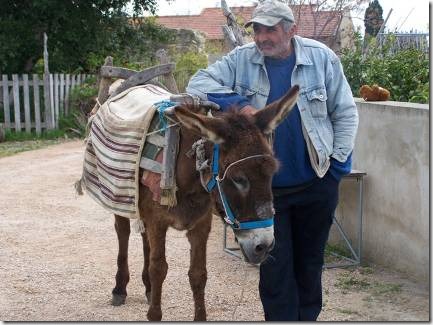
Waiting for kids to go donkey riding. (photo by Charmaine)
After my horse ride in China and the pony trek in the Philippines, I took a pass on the donkey rides tempting as they were. And no one over the age of 6 seemed to be riding so we would have looked odder than I had a mind to look.
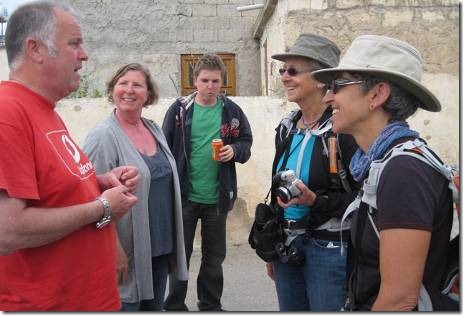
The “Bird Man of Cyprus” Gavin Croucher and his family with Charmaine and Linda
http://www.kuskor.org/en/kuskor/cyprus-wildlife-guide.html
Charmaine and Linda are “birders” and have enjoyed lots of sightings in the short time they have been here. They made contact with the local birding association Kuskor and will take part in a watching expedition on April 14th along the Karpaz Peninsular.
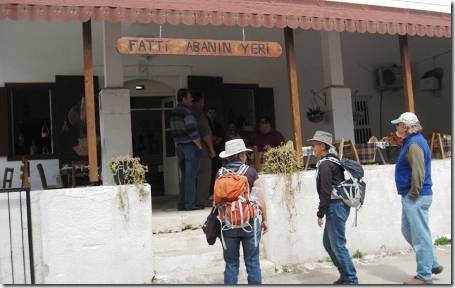
Anne recommended Fatti’s for lunch so that’s where we went.
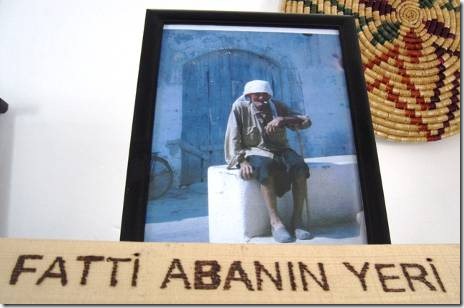
He looks quite a character: The sign read’s Fatti Abanin’s Place
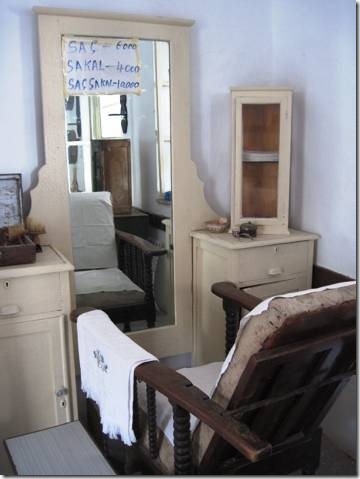
The barber chair and prices for hair, beard and “hair and beard”
Interestingly lira used to have lots more 00000 and there seems to be no discount for hair and beard together as you just add the price of them separately.
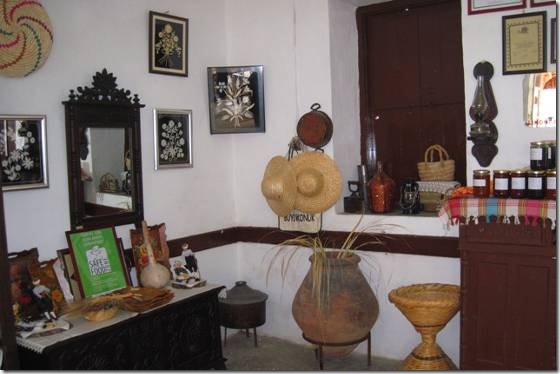
Once a barber’s shop, Anne told us it was converted to a restaurant by Fatti’s widow.
Cypriot crafts on the wall. The framed art are created from cut silkworm cocoons.
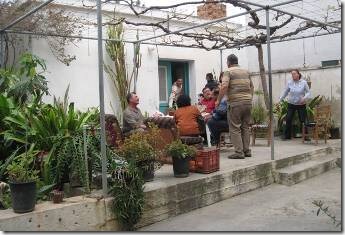
The family table out back.
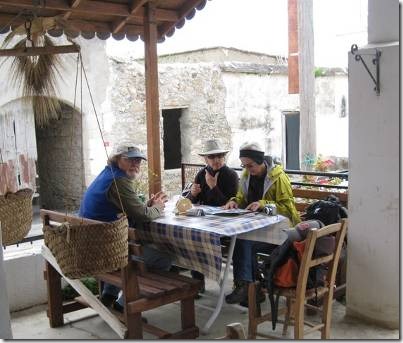
Alfresco lunch which gave us a great view of the “oldish car parade.”
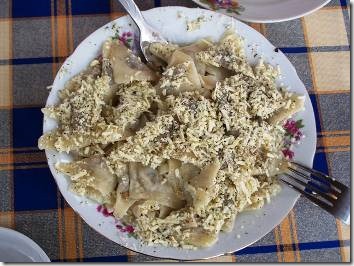
Yummmmm Tatar Böreğİ Turkish Dumplings (Charmaine’s photo)
We’d eaten this dish in Turkey where it was served in a yogurt sauce but I like this better served simply in the meat broth. These were filled with lamb with grated cheese on top and we ate every bit. We’d ordered two of these dishes and two of the Yahnili El Makarnasi which was a pasta dish topped with a fricasseed chicken leg. We went home with most of the pasta and had it for dinner with vegetables and that also made a wonderful meal.
In case you want to make it at home, here is a description and recipe.
Turkish Dumplings http://www.superluminal.com/cookbook/substantial_manti.html
One of the most ancient dishes in Turkic cuisine (in modern Turkey called Tatar B�regi, "boerek of the Tatars"), manti originated in Central Asia, and remains a staple food there. It is commonly served as a one-dish meal. This recipe offers two variations, one stuffed with meat and the other with a meat-pumpkin blend.
Total time 1-1/2 hours
Dough
8 cups all-purpose flour
1 tbsp. salt
3 eggs
3/4+ cup water
Filling #1: Meat
4 cups ground meat
1-1/2 cups minced onions
3/4 cup finely chopped parsley
2 tsp. salt
1 tsp. black pepper
Filling #12: Meat & Pumpkin
2 cups ground meat
1-1/2 cups minced onions
2 cups pumpkin, or pumpkin and carrots, peeled and finely chopped
2 tsp. salt
1 tsp. black pepper
Sauces and garnishes for meat-filled manti
3 cups peeled and chopped tomato
1/2 cup butter
1/2 tsp. cayenne
4 cups yogurt
2 tbsp. minced garlic
Melted butter
Sour cream
Combine all but 1/2 cup of the flour, and the salt, in a bowl. Make a well in the center and add the eggs and water. Mix well, then knead for 10 minutes or until the dough is smooth and slightly stiff. Divide it into three parts, cover with a damp towel and let it rest for 30 minutes. While the dough rests, prepare one of the fillings. Combine all of the filling ingredients and mix well.
On a floured surface, roll out one ball of dough to 1/4" thickness, sprinkling lightly over the top with flour. Cut the dough into 1" squares. Place 1/2 tsp. of filling into the center of each square. Bring the corners together, sealing and pressing it into a tiny bundle; or fold it into a triangle. Seal the dough by pressing the edges together. Place the manti on floured baking sheet. Repeat with the rest of the dough and filling.
Fill a large pot with water, add salt and bring to boil over medium heat. Add the manti and stir gently to keep them from sticking to each other. Do not crowd the pot. Reduce the heat and simmer, uncovered, for 15-20 minutes, stirring occasionally, until the manti are tender but firm. Alternately, manti can be steamed in a well-oiled steamer; this takes a little more time, about 30-45 minutes.
If you are preparing manti filled only with meat, prepare the sauces. Combine the minced tomato, butter and cayenne in a heavy saucepan over medium heat. Bring to a simmer and cook for 5 minutes, then turn off the heat and cover the pot to keep warm.
Whisk together the yogurt and minced garlic and set aside.
When the manti are ready, transfer them to a serving dish. For meat-filled manti, pour the yogurt-garlic mixture on top, then drizzle with the tomato sauce and serve hot. For meat and pumpkin-filled manti, garnish with melted butter and sour cream.
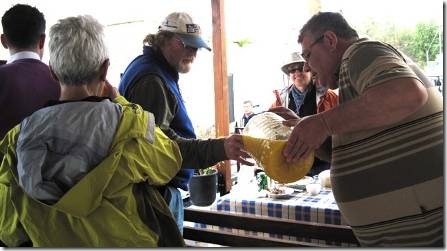
Free fresh orange juice was served after our meal.
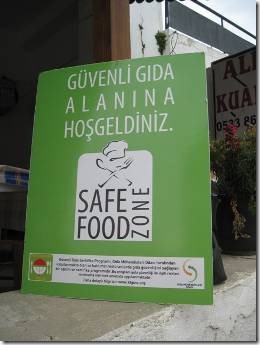
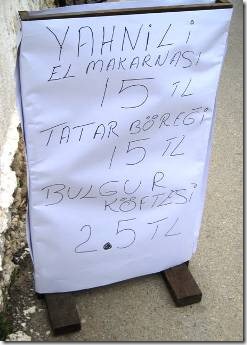
Signs out front of the restaurant.
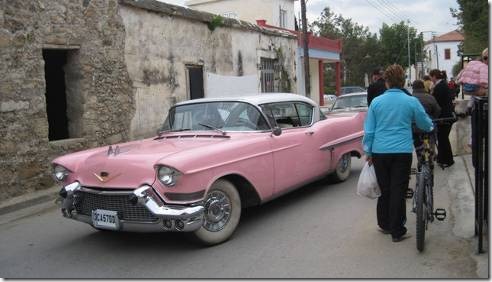
Part of the car parade.
Next email will be our after lunch adventures

